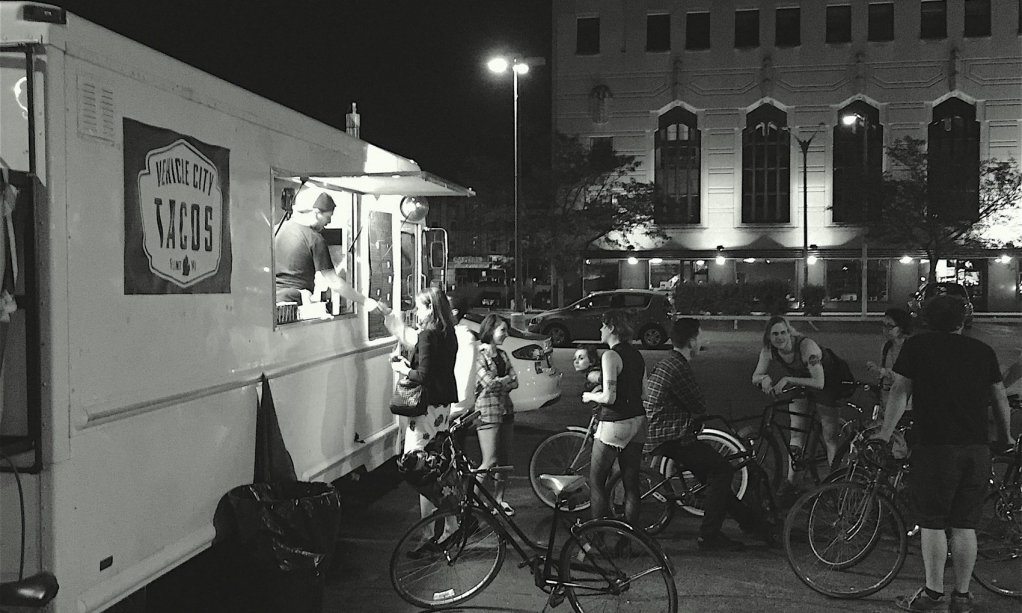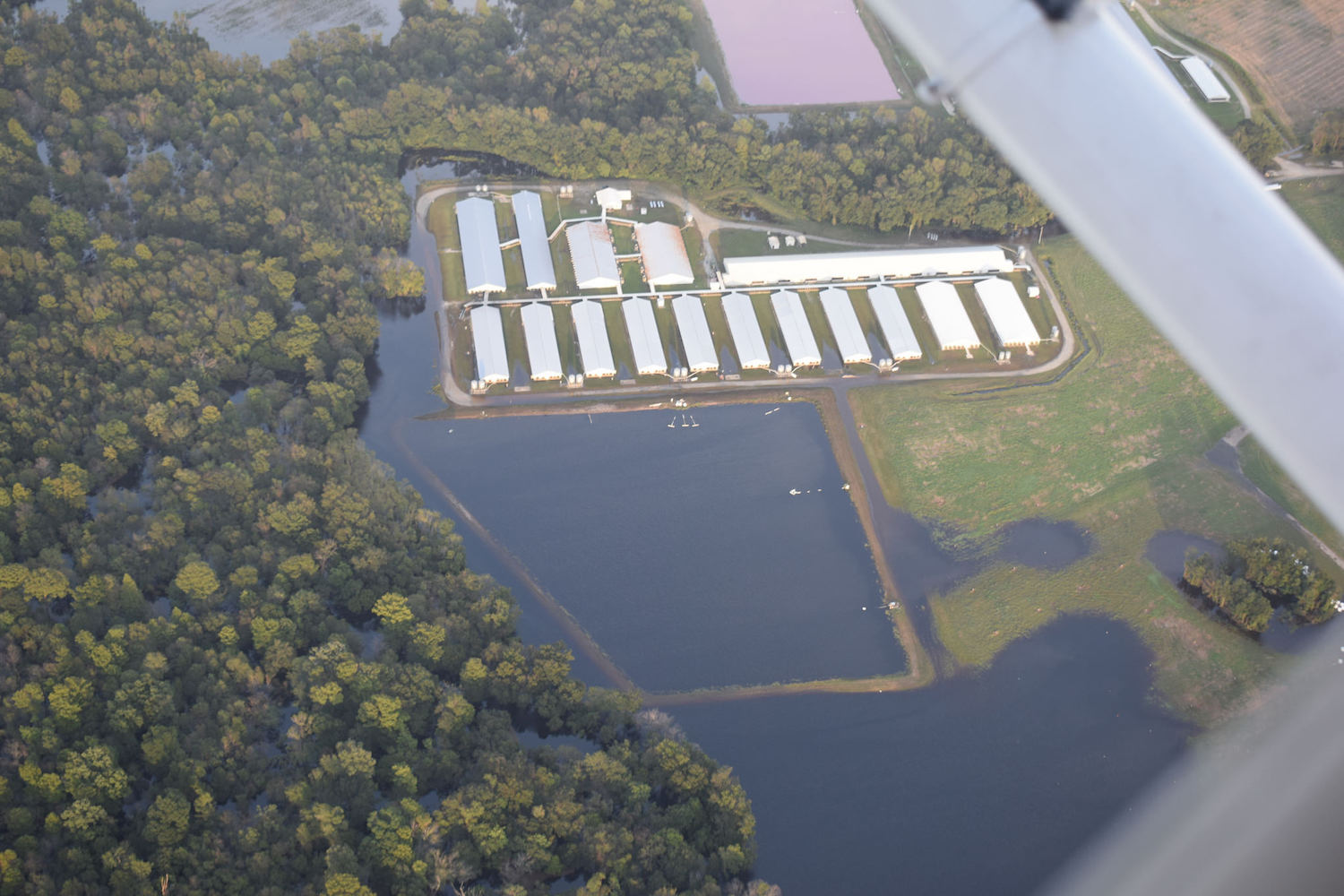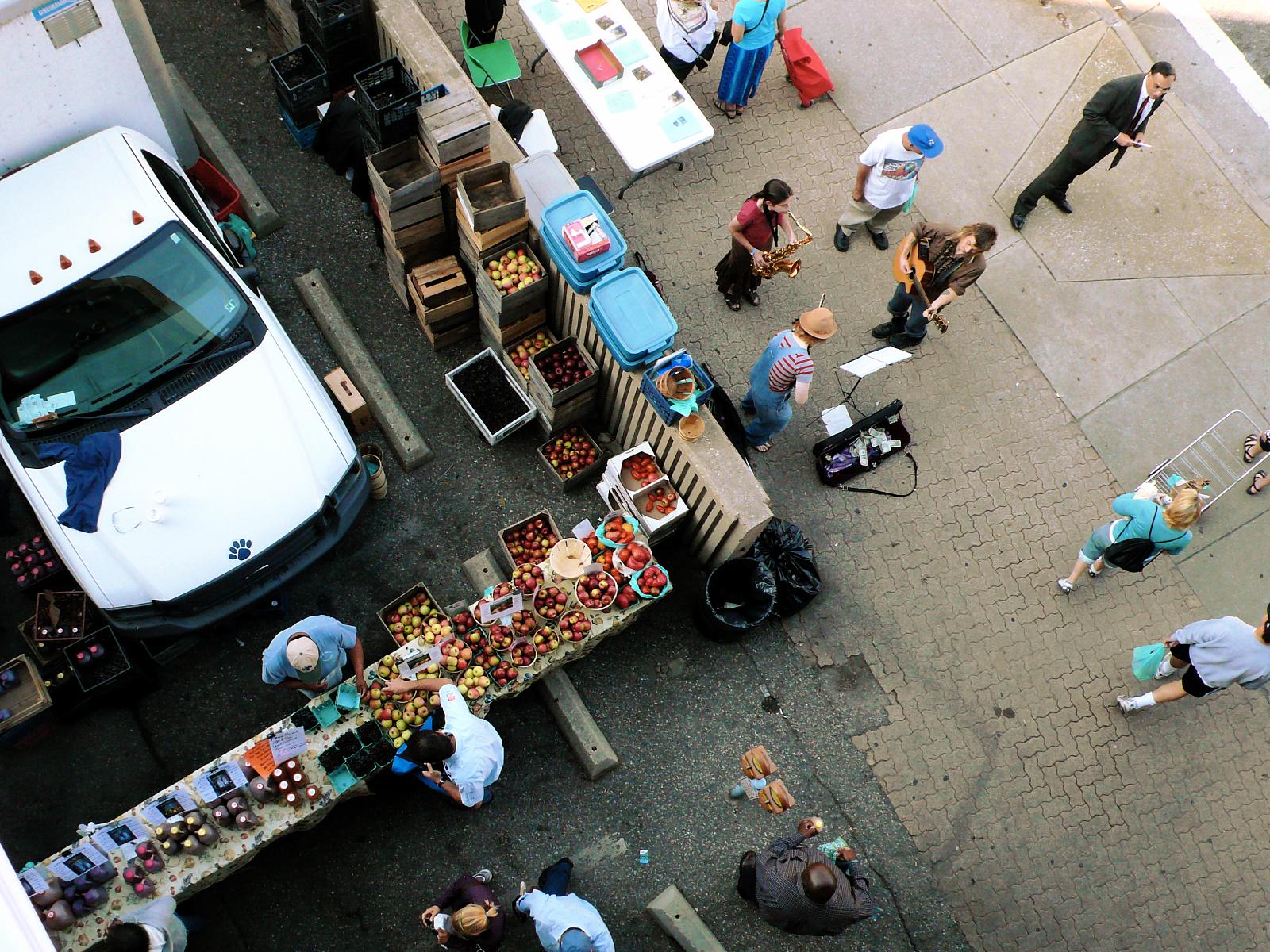
Vehicle City Tacos
On the whole, Flint Food Works—a kitchen incubator in economically battered Flint, Michigan—is doing pretty well. Inside a once-vacant printing press building downtown, Culinary director Sean Gartland has helped plenty of neophytes launch food businesses. But he finds himself facing an unexpected conundrum: when someone’s ready to graduate, there’s nowhere for them to go.
“As some of our kitchen users are starting to get busier, we don’t have space for as much storage as they possibly need,” Gartland says. “That challenge comes in on the heels of my other big challenge, which is that I don’t really know what do with folks yet who are incubating out.”
It’s an unintended by-product of the incubator boom: By offering professional mentorship and low-cost kitchen access, incubators have made it easier than ever for entrepreneurs to enter the food space. But though such facilities help businesses grow, they aren’t fully equipped to handle success.
Here’s their trouble. Incubating businesses run into production bottlenecks quickly, maxing out the possibilities of shared, communal space. Limited capacity makes it harder to reach crucial next stages, like generating the volume that would justify building out a private facility, or moving to a full-scale co-packer. Some businesses outgrow the incubator, in other words, long before they’re ready to leave the nest.
Take, for instance, Rachel Limban of Semi-Sweets, a pastry chef who started her own bakery business in 2014. Flint Food Works was a good choice for her. Low upfront costs allowed her to get started without taking out any major loans, and the mentorship on licensure and insurance helped her get up and running quickly. Today, she says, Semi-Sweets pastries and custom deserts are in high demand at local coffee shops, restaurants, and country clubs. Except now Limban is in a double bind: though she’s maxed out what she can do in the incubator, she also isn’t quite ready to move on.
“I’m getting too big,” she says. “It’s a smaller kitchen, so four employees with three tables is comfortable. But I’m getting to the point where I’m needing more employees.”
https://www.instagram.com/p/1IlITWxy3F/?taken-by=semisweetsllc
In order to be able to hire more employees, she’d need to be able produce more volume—and that’s not currently possible. Flint Food Works doesn’t have the cooling space she’d need to grow production. At the same time, without more volume, she can’t achieve the economies of scale that would allow her to cut costs and hire more staff.
Even if she could afford a personal brick-and-mortar, Limban might not be able to track one down. “It’s hard to find kitchens for sale,” she says. And there are things she’d miss about the incubator, anyway. A new space would mean an expensive build-out, plus all kinds of added monthly costs.
“Right now, it’s an all-inclusive price. It includes electricity, garbage disposal, everything,” she says. “When I start looking at my own place, I realize—OK, I’m going to have to get a dumpster. If it snows, I’m going to have to go shovel or pay someone to do it. The insurance costs go up. And on top of that, you have to do your own electricity, your own water. All that stuff starts to add up in my mind. We’re saving, but it’s going to take us some time to get there.”
Even if she were willing to take out a large loan, it might not be possible for her to get one. Many loan providers want to see two or three years of earning statements—that’s longer than Semi-Sweets has been in business. Her short business lifespan looks like a liability, even though it’s a sign of success.
 Vehicle City Tacos
Vehicle City Tacos Danny Moilanen of Vehicle City Tacos
Danny Moilanen of Vehicle City Tacos has a completely different business model. He operates a food truck, and uses Flint Food Works as his commissary kitchen. But, like Limban, he’s both too big and too small.
“Food Works as incubator space is great because it’s a chance to build your product and prototype your product and see if there’s a demand for it and test it in the market,” Moilanen says. “But it’s really not a tool that’s built for being a fully-functional restaurant. Our sales volume has increased so much that we’re having physical limitations with the amount of space that we have in the incubator.”
Right now he’s spending so much time at the incubator that a monthly lease of his own, at Flint market rates, would actually be cheaper. But the lease isn’t really the problem—the way it might be in a city like New York or San Francisco, where rent is a huge part of any food business’s operating cost. Moilanen might be ready to take on the lease, but he’s not quite ready for the build-out.
“Financing is a big part in terms of figuring out where we are going to get those funds to make all the construction that we’re going to need. That’s going to be a large chunk of money. That’s probably our biggest barrier: funding.”
Even in a cheap place like Flint, that fixed build-out cost is daunting. And it’s one thing that incubators can’t really help with. Any business is going to be hard-pressed to finance a $100,000 construction job out of a small kitchen, rented by the hour.
Should incubators change to adapt to the needs of their most successful clients? Or do we need a new piece of infrastructure altogether—something that can help businesses bridge the gap?
“There’s definitely a missing link,” says Jeffrey M. Shepard, an entrepreneur who wrote his dissertation on business incubators. “You see companies not reaching long-term goals based on the fact that they don’t have the right people helping them make it over the hump. There’s starting to be a lot more emphasis on that in-between space.”
 Flint Food Works
Flint Food Works Food Works tenants often sell their product at the Flint Farmers Market
In New York City, local government has started creating “step-out spaces,” which operate like halfway houses for incubator graduates. Though the program is currently being tested with technology manufacturers, the model could eventually apply to those working in food.
“Once you get your company up to where you employ half a dozen people, you’re too big for an incubator,” says Ian Fried, spokesperson for the New York City Economic Development Corporation. “The idea is that you graduate from an incubator, move to your step-out space—and stay there until you can afford a market rate space in the city.”
But the private sector has also sensed a market opportunity in the growing pains of awkward-phase companies.
In Denver, for instance, a developer is building a series of individual food processing units inside a 47,000-square-foot building; each 3,200-square-foot “pod” also includes access to communal loading docks, freezer/refrigeration space, and a break room. There’s even a USDA inspector’s office. The idea is to provide the community and pooled resources of an incubator, while allowing for serious manufacturing capability.
 Flint Food Works
Flint Food Works Incubators typically consist of one large shared commercial kitchen. The developer in Denver is offering individual units with some shared features
Meanwhile, at least one software-as-a-service platform may step in. The Food Corridor is a yet-to-launch platform that aims to connects food entrepreneurs with cooking spaces—“like AirBNB for commercial kitchens,” says founder Ashley Colpaart. That not only means pairing startups with churches, schools, and other spaces with off-hour capacity, but also helping growing food businesses find one another–partners with whom to share space and costs.
That’s an appealing model. A post-incubator space for growing companies sounds good to Limban.
“The more that I’m thinking about it, if there was a step up from where we are now, an incubator with four small businesses in that building, that would be amazing,” she says. Moilanen, meanwhile, dreams of a step-out space tailored to his specific needs: “a bigger shared kitchen space with more cold storage and other things to address the immediate need for food trucks. I think something like that would be important to developing the food truck scene and culture here. Something like that would be hugely, hugely, impactful to our business.”
Colpaart, who also runs a Facebook group for incubator operators, says there may be a role for a new generation of contract manufacturers: niche co-packers who cater to younger businesses.
“When you move to a co-packer it’s usually because you can’t do it all yourself anymore,” she says. You’re ready to get bigger, so you go to a co-packer to get the consistency the market is asking for. I think specialty co-packers is a really good idea—it seems like a very natural progression of the supply chain.”
There’s certainly an unmet need here, and there won’t be just one solution. Kitchen incubators were a smart response to a huge, unexpected surge of interest in food. But it’s going to require creativity to carry the next generation of foodmakers forward, too. Small food businesses are growing. That’s a good problem to have.










